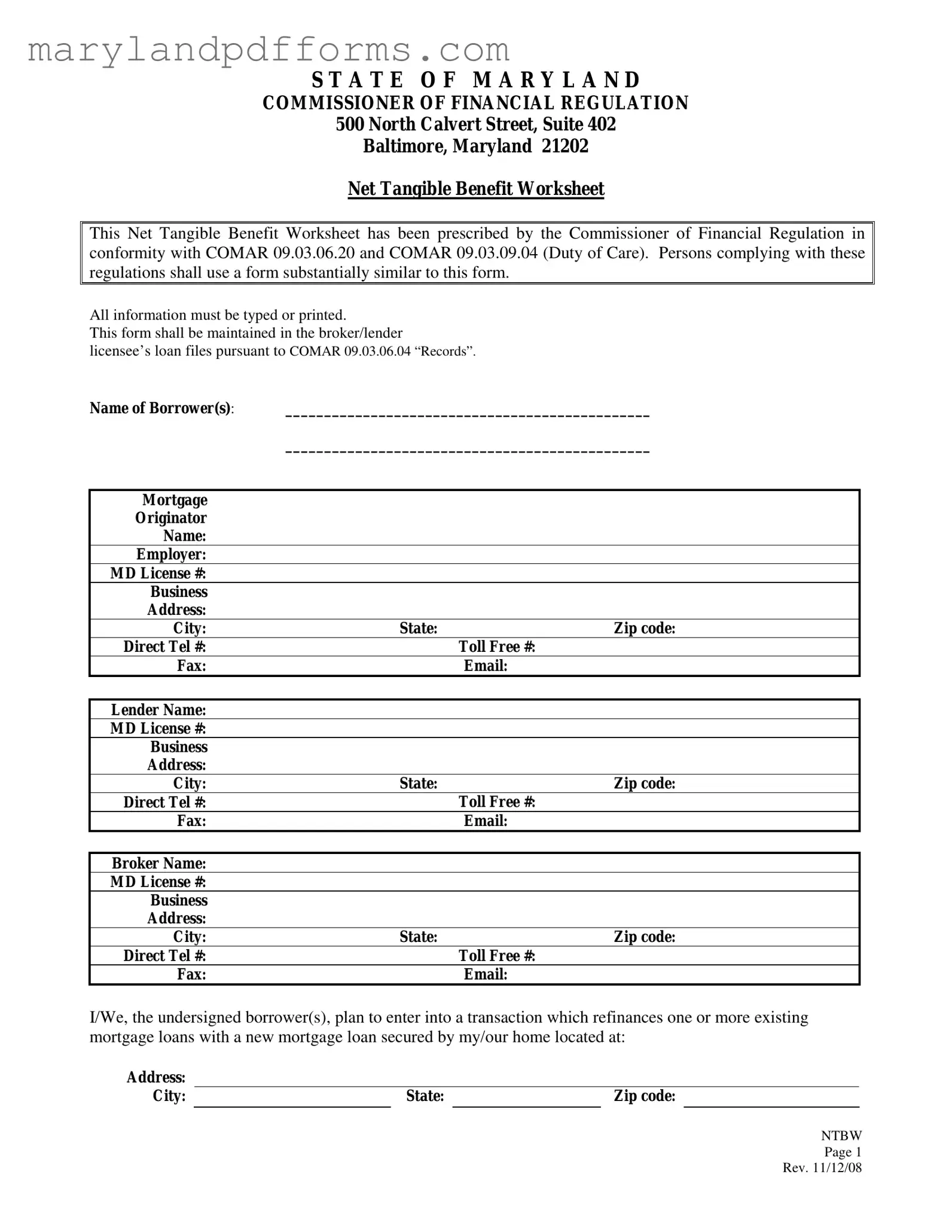What is the purpose of the Maryland Net Tangible Benefit Worksheet?
The Maryland Net Tangible Benefit Worksheet is designed to ensure that borrowers receive a clear understanding of the benefits associated with refinancing their mortgage loans. It is a requirement under Maryland regulations that lenders provide this form to demonstrate that the new loan offers a tangible benefit compared to the existing loan. The worksheet helps both the borrower and the lender assess the financial advantages of the new mortgage, taking into account various factors such as interest rates, monthly payments, and loan terms.
Who needs to complete the Net Tangible Benefit Worksheet?
Both borrowers and lenders are involved in the completion of the Net Tangible Benefit Worksheet. Borrowers must provide their personal information, including names and contact details, as well as the specifics of their existing mortgage and the new loan they are considering. Lenders, including mortgage originators and brokers, are responsible for ensuring that this form is filled out accurately and kept on file as part of the loan documentation. It is essential for compliance with Maryland's financial regulations.
The worksheet requires several key pieces of information, including:
-
Names and contact details of the borrower(s)
-
Details of the mortgage originator and lender, including their Maryland license numbers
-
The address of the property being refinanced
-
A list of potential benefits the borrower may receive from the new loan, which the borrower must initial
Additionally, the borrower must acknowledge their understanding of the costs associated with the new loan and confirm that they believe it provides a net tangible benefit.
The worksheet outlines several benefits that borrowers may experience by refinancing their mortgage. Some examples include:
-
Obtaining a lower interest rate
-
Reducing monthly payments
-
Switching from an adjustable-rate mortgage to a fixed-rate mortgage
-
Eliminating private mortgage insurance
-
Consolidating other loans into a new mortgage
These benefits help borrowers evaluate whether refinancing is the right decision for their financial situation. Each borrower should consider their unique circumstances when assessing the advantages of a new loan.
